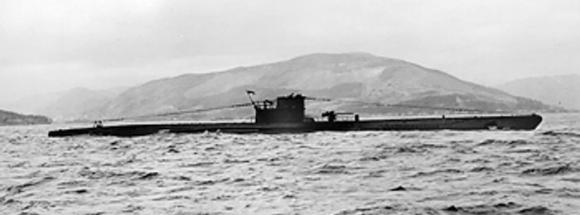 In June, three Spanish divers located the wreck of the German World War II submarine U-966 near the coast of Galicia in north-west Spain. The BBC reports that the submarine’s wreckage is spread widely in a very rocky area where rough weather often makes diving impossible. The debris was photographed at a depth of 24-26m (79-85ft). One of the divers, naval historian Yago Abilleira, said they had found the wreckage near Estaca de Bares. They are not revealing the exact location, as it is a war grave.
In June, three Spanish divers located the wreck of the German World War II submarine U-966 near the coast of Galicia in north-west Spain. The BBC reports that the submarine’s wreckage is spread widely in a very rocky area where rough weather often makes diving impossible. The debris was photographed at a depth of 24-26m (79-85ft). One of the divers, naval historian Yago Abilleira, said they had found the wreckage near Estaca de Bares. They are not revealing the exact location, as it is a war grave.
 I recently learned the slungshot, not to be confused with a slingshot. The slungshot is a monkey’s fist’s nasty cousin.
I recently learned the slungshot, not to be confused with a slingshot. The slungshot is a monkey’s fist’s nasty cousin.
As most are probably aware, a monkey’s fist is a knot, shaped like a ball (or a fist), used to provide weight to the end of a heaving line. Typically one end of a moderately heavy line is tied into a monkey’s fist while the other end is finished in an eye splice. The monkey fist knot is often tied around a stone or a piece of lead or iron to give it additional weight. A light heaving line is tied to the eye splice and the monkey’s fist is thrown from a ship or boat to a line handler on the dock as the ship or boat is approaching. The heaving line is then attached to a heavier hawser.
A monkey’s fist is a practical, as well as an attractive bit of marlinspike seamanship. These days, they often appear as decorative knots on keychains and jewelry.
But then what is a slungshot? Continue reading
Forty-eight years ago today, 100,000 people who lined the banks of the River Avon in Bristol as the SS Great Britain returned to her birthplace. In the intervening years, the rusting hulk has been meticulously restored to her former glory and now rests in the drydock where she was built. As a museum ship, she is visited by between 150,000 and 200,000 visitors annually. For Throw-Back-Thursday, here is an updated post from 2016 about the grand old ship, followed by a video about her return to Bristol in 1970.
In the spring of 2016, I visited the museum ship SS Great Britain, in Bristol, UK. When she was launched in 1843, the iron-hulled luxury passenger steamship SS Great Britain was described as “the greatest experiment since the Creation.”
Here is another of the “True Facts” series with more than you may need or want to know about the scotoplane, commonly known as the sea pig, a type of deep-sea sea cucumber.
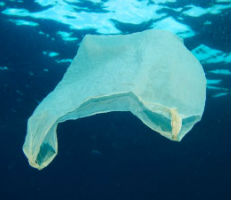 The best way to combat plastic pollution in the oceans is to stop the plastic before it gets there.
The best way to combat plastic pollution in the oceans is to stop the plastic before it gets there.
We have been posting about the ever-growing garbage patches in the world’s oceans for the better part of a decade. The posts are beginning to have a certain sameness. Things are getting worse. The garbage patches trapped in the ocean gyres are getting growing larger. Six years ago, the Eastern Pacific Garbage Patch was a wide as the Continental United States. Whales are dying from ingesting plastic. Record levels of microplastics are being found in Arctic ice. A popular dive spot near Bali is turned into a “sea of trash” by plastic bags. And on and on and on.
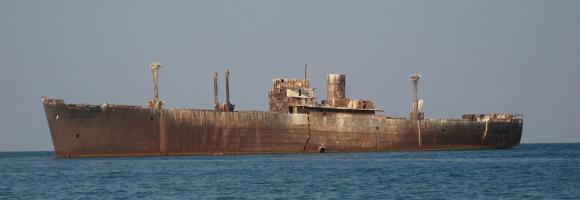 The MV Empire Strength, a 7,355 GRT refrigerated cargo ship, was built by Harland and Wolff in 1942. In her long career, she had seven owners and four names. When she was purchased by a Greek owner in 1965, she was renamed, MV E Evangelia. Her sailing days ended when she ran aground in 1968 in the Black Sea on the coast of Romania near the seaside resort of Costinești. With her back broken, she was declared a constructive total loss and abandoned. Now the wreck is a local attraction.
The MV Empire Strength, a 7,355 GRT refrigerated cargo ship, was built by Harland and Wolff in 1942. In her long career, she had seven owners and four names. When she was purchased by a Greek owner in 1965, she was renamed, MV E Evangelia. Her sailing days ended when she ran aground in 1968 in the Black Sea on the coast of Romania near the seaside resort of Costinești. With her back broken, she was declared a constructive total loss and abandoned. Now the wreck is a local attraction.
The video below captures a kayaker who paddles through an opening into the shell into the engine room. The first diesel engine is probably a generator while the six-cylinder main engine towers above the paddler in the background. The video has a slightly otherworldly quality, like images from a video game or a steampunk dream. Continue reading
 USS Oriskany is an Essex-class aircraft carrier completed after World War II. She served in both the Korean and the Vietnam wars. In 2006, the almost 900′ long ship became the world’s largest artificial reef after being sunk 22 miles south of Pensacola in more than 200 feet of water, as part of the Florida Panhandle Shipwreck Trail. Nicknamed the “Great Carrier Reef.” The top of the ship is within 80 feet of the surface and there are considerable portions of the ship in less than 100 feet of water, making them accessible to both sport and advanced divers. Here a video of diving on the Might O, the Great Carrier Reef. Continue reading
USS Oriskany is an Essex-class aircraft carrier completed after World War II. She served in both the Korean and the Vietnam wars. In 2006, the almost 900′ long ship became the world’s largest artificial reef after being sunk 22 miles south of Pensacola in more than 200 feet of water, as part of the Florida Panhandle Shipwreck Trail. Nicknamed the “Great Carrier Reef.” The top of the ship is within 80 feet of the surface and there are considerable portions of the ship in less than 100 feet of water, making them accessible to both sport and advanced divers. Here a video of diving on the Might O, the Great Carrier Reef. Continue reading
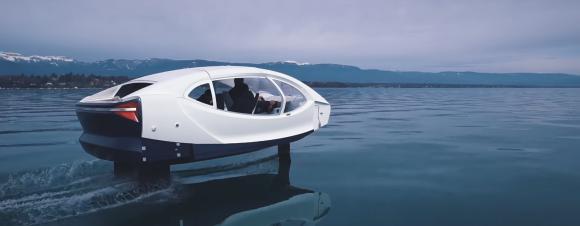 A year and a half ago we posted about SeaBubbles — foiling electric water taxis. The idea to develop a five-person water taxi comes from Alain Thébault, the designer and skipper of record-breaking ocean-going hydrofoil Hydroptère. The distance from an idea to implementation, however, can be considerable. The SeaBubbles feature fully submerged foils which require a sophisticated control system for the craft to remain stable. The SeaBubble team are attempting to achieve a ride as smooth as a car on a well-paved road by using an advanced fly-by-wire control system. Fly-by-wire is a term used in aeronautics to describe a semiautomatic computer-regulated system for controlling the flight of an aircraft. While the SeaBubbles will not take off, they will be flying on foils. Here is a short video about the SeaBubble fly-by-wire system. Continue reading
A year and a half ago we posted about SeaBubbles — foiling electric water taxis. The idea to develop a five-person water taxi comes from Alain Thébault, the designer and skipper of record-breaking ocean-going hydrofoil Hydroptère. The distance from an idea to implementation, however, can be considerable. The SeaBubbles feature fully submerged foils which require a sophisticated control system for the craft to remain stable. The SeaBubble team are attempting to achieve a ride as smooth as a car on a well-paved road by using an advanced fly-by-wire control system. Fly-by-wire is a term used in aeronautics to describe a semiautomatic computer-regulated system for controlling the flight of an aircraft. While the SeaBubbles will not take off, they will be flying on foils. Here is a short video about the SeaBubble fly-by-wire system. Continue reading
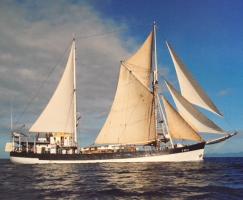 We recently posted about crewing opportunities for the auxiliary-sail trading vessel Tiare Taporo operating from the Cook Islands. The Tiare Taporo is, however, not the only commercial sailing vessel serving the Cook islands. The SV Kwai will soon be departing on its 45th voyage from Hawaii calling on the islands of Kiritimati (Christmas Island), Tabuaeran (Fanning) and Teraina, (Washington Island) as well as the Northern Cook Islands of Penrhyn, Rakahanga, Manihiki, Nassau, and Pukapuka.
We recently posted about crewing opportunities for the auxiliary-sail trading vessel Tiare Taporo operating from the Cook Islands. The Tiare Taporo is, however, not the only commercial sailing vessel serving the Cook islands. The SV Kwai will soon be departing on its 45th voyage from Hawaii calling on the islands of Kiritimati (Christmas Island), Tabuaeran (Fanning) and Teraina, (Washington Island) as well as the Northern Cook Islands of Penrhyn, Rakahanga, Manihiki, Nassau, and Pukapuka.
The SV Kwai is 43 meters (140 ft), with a beam of 7 meters (23 ft), draws 3 meters (10 ft), has a tonnage of 179 RT and is ketch rigged. While equipped with a main engine and generator, the goal is to operate under sail 90% of the time. SV Kwai has been carrying cargo and passengers between Hawaii and the Line and Cook Islands since 2006.
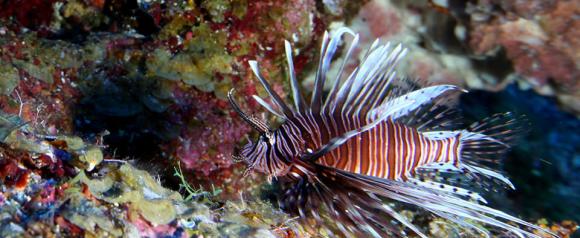 Sometime in the 1990s, two different species of lionfish made it into the waters of the Atlantic off Florida. Native to the Indo-Pacific, the venomous, predatory fish spread rapidly, decimating local reef fish in the Atlantic, the Gulf of Mexico, and the Caribbean. Lacking local predators to stop its spreading, the lionfish have been described as “one of the most aggressively invasive species on the planet“. So far, the most effective means of slowing the spread of the fish is for divers to spear them, a relatively slow and challenging approach.
Sometime in the 1990s, two different species of lionfish made it into the waters of the Atlantic off Florida. Native to the Indo-Pacific, the venomous, predatory fish spread rapidly, decimating local reef fish in the Atlantic, the Gulf of Mexico, and the Caribbean. Lacking local predators to stop its spreading, the lionfish have been described as “one of the most aggressively invasive species on the planet“. So far, the most effective means of slowing the spread of the fish is for divers to spear them, a relatively slow and challenging approach.
I recently came across a video from 2015, showing a grouper eating a lionfish. Groupers and sharks are natural predators for the lionfish in the Pacific, but the Atlantic and Caribbean groupers have been slow to adapt to considering the new invader as a food source. Are local groupers and other predators developing a taste for lionfish? About the video: Continue reading
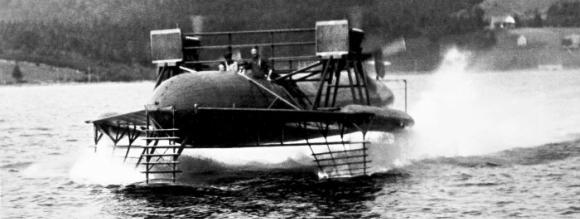
Bell’s HD-4
Most of us think of Alexander Graham Bell as the inventor of the telephone, as indeed he was. He was also an early pioneer in hydrofoil boats. His hydrofoil, Hydrodome #4, better known as the HD-4, set a world marine speed record in 1919.
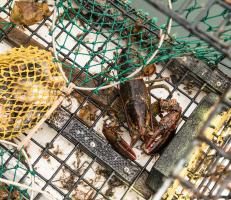
Photo: Greta Rybus for The New York Times
We recently posted about concerns that the current Maine lobster boom may collapse in time due to climate change. The fishing industries in Maine and Alaska are facing a far more immediate challenge, however. New US tariffs on steel and aluminum and retaliatory tariffs on lobster imports by China could drive up costs and cut lobster exports while giving Canadian lobstermen an advantage. Likewise, retaliatory tariffs on salmon and other Alaskan seafood could seriously hurt their fishing industry.
As of July 6th, China will impose an additional 25% tariff on Maine lobster. China buys about a fifth of American lobster exports, valued at $137 million. The tariff is expected to give Canadian lobster exporters, who are not subject to the tariff, an advantage in the Chinese market.
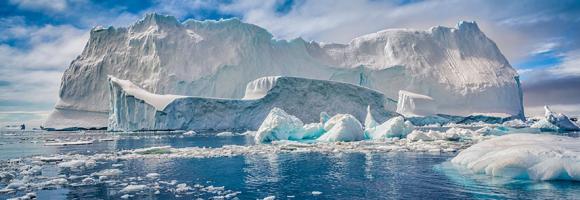
Photo: BARON REZNIK/FLICKR
A new study from the journal Nature makes a terrifying observation — the rate at which Antarctic ice is melting has tripled from only a decade ago. This is significant as more than 60 percent of the freshwater on Earth is locked in Antarctica’s ice sheets. The continent has lost nearly three trillion tons of ice since 1992.
The New York Times reports that the continent is now melting so fast, scientists say, that it will contribute six inches (15 centimeters) to sea-level rise by 2100. That is at the upper end of what the Intergovernmental Panel on Climate Change has estimated Antarctica alone could contribute to sea level rise this century.
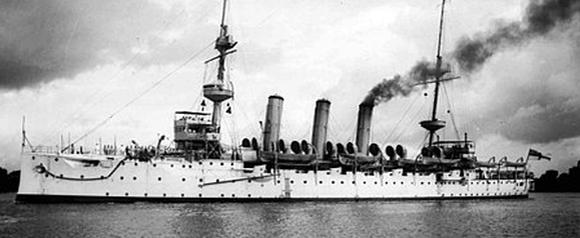
HMS Hermes
Last year we posted about warships from World War II that had vanished after illegal scrappers literally cut them up and hauled the steel away. Here is a news item on theft on a different scale and with a better outcome. Recently two divers, Nigel Ingram, 57, and John Blight, 58, were found guilty of looting items from the World War I wreck of the HMS Hermes in the English Channel. The two divers stole more than 100 items, including a torpedo hatch, launch panels, and chinaware. The total value of items stolen from the wreck was reported to be more than £150,000.
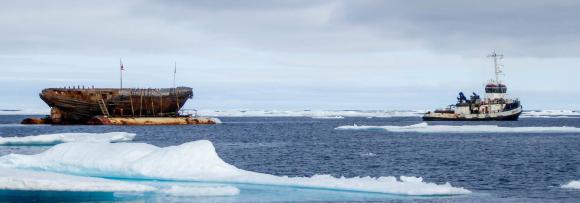
Maud Returns Home – Facebook
For several years, we have been following the attempts to raise Arctic explorer Roald Amundsen‘s research ship Maud from where it has been sitting in ice and mud for close to 90 years. To say that the conditions in Cambridge Bay off the Nunavut territory of northern Canada have been challenging would be an understatement. Over the last eight summers, a team of Norwegians has been working to raise and ultimately return Maud back to Norway. In the summer of 2017, they achieved a major milestone — successfully towing the Maud on the barge Jensen out of Cambridge Bay to Aasiaat on West Greenland. They are now preparing for the final leg of the journey.
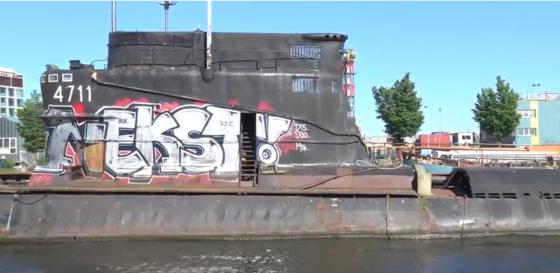 A group of “urban explorers” ventured out to climb aboard an abandoned Soviet submarine tied up in the Maritime Quarter, the former NDSM shipyard in Amsterdam North, in the Netherlands. The submarine was built in 1956 or 1957. It was designated 4711 B-80, and is variously described online as either a Zulu or a Foxtrot Class submarine. (The B-80 appears to be one of the last of the earlier Zulu class.)
A group of “urban explorers” ventured out to climb aboard an abandoned Soviet submarine tied up in the Maritime Quarter, the former NDSM shipyard in Amsterdam North, in the Netherlands. The submarine was built in 1956 or 1957. It was designated 4711 B-80, and is variously described online as either a Zulu or a Foxtrot Class submarine. (The B-80 appears to be one of the last of the earlier Zulu class.)
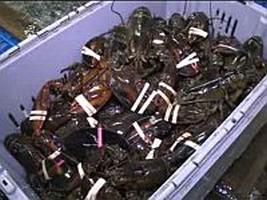 Today, the New York Times featured an article titled — “Climate Change Brought a Lobster Boom. Now It Could Cause a Bust.” The article suggests that while rising water temperatures due to climate change have brought a boom in the Maine lobster catch, increasing temperatures may lead to a collapse of the fishery. This concern is nothing new. Five years ago, we posted “The Ecology and Economics of Lobster – Will The Maine Lobster Boom End in a Bust?” Increasingly, the signs of a bust are becoming more ominous.
Today, the New York Times featured an article titled — “Climate Change Brought a Lobster Boom. Now It Could Cause a Bust.” The article suggests that while rising water temperatures due to climate change have brought a boom in the Maine lobster catch, increasing temperatures may lead to a collapse of the fishery. This concern is nothing new. Five years ago, we posted “The Ecology and Economics of Lobster – Will The Maine Lobster Boom End in a Bust?” Increasingly, the signs of a bust are becoming more ominous.
The NYTimes quotes Dave Cousens, who stepped down as president of the Maine Lobstermen’s Association in March, “Climate change really helped us for the last 20 years.” But, he added, “Climate change is going to kill us, in probably the next 30.”
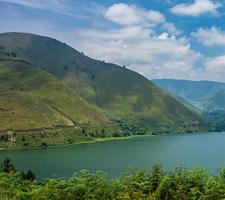
Lake Toba
A ferry across Lake Toba in North Sumatra sank on Monday in bad weather and a reported 192 are missing and feared dead. Only 18 survivors have been rescued. Rescuers looking for additional survivors have been hampered by high winds and rain. The ferry’s legal capacity is reported to have been between 43 and 60 passengers, depending on the sources, with a comparable number of personal floatation devices (PFDs) aboard.
Lake Toba is a popular tourist destination and at 450m (1,500ft) deep one of the deepest lakes in the world. The lake was created by an ancient volcano eruption. Ferries run between a scenic island in the middle and towns on the shore.
Sadly, Indonesia, a country of some 18,000 islands, has one of the world’s worst ferry safety records. Continue reading
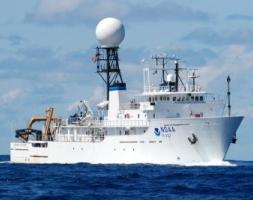
Okeanos Explorer
On June 25th, the National Oceanic and Atmospheric Administration (NOAA) will be investigating an unidentified shipwreck 40 miles off the coast of Hatteras Island using a robotic submersible launched from the research vessel Okeanos Explorer. The exploration will be livestreamed with viewing at the North Carolina Aquarium on Roanoke Island. The broadcast will take place in the aquarium’s Neptune’s Theater from 9:30 a.m. to 3:30 p.m. Coastal Review Online reports:
Visitors will be able to ask guest experts questions who will point out significant developments and even communicate directly with the Okeanos archaeological team. The UNC Coastal Studies Institute will also be on hand to present a 3-D underwater shipwreck video shot in North Carolina waters, and offer educational interpretation of that diving adventure. Continue reading
I recently saw two stories in the press that happen to overlap.
 Captain Reinhard Hardegen
Captain Reinhard Hardegen
The first story was the report of the death of Reinhard Hardegen at 105 years old. Hardegen was believed to have been the last surviving German U-boat commander from World War II. He also ranked among the most successful U-boat captains of the war, sinking 22 merchant ships with a capacity of 115,656 GRT, over five patrols.
Two of Korvettenkapitän Hardegen‘s patrols were on the East Coast of the United States as part of Operation Drumbeat. With US and Canadian patrol ships diverted to protect British shipping, five German U-boats attacked shipping along the North American East Coast from Newfoundland to the Caribbean. In less than seven months, U-boat attacks destroyed 22 percent of the tanker fleet and sank 233 ships in the Atlantic Ocean and the Gulf of Mexico. The U-boats killed 5,000 seamen and passengers, more than twice the number of people who perished at Pearl Harbor. On Hardegen’s two patrols in command of U-123 during Operation Drumbeat, he sank eighteen ships totaling over 100,000 GRT.
